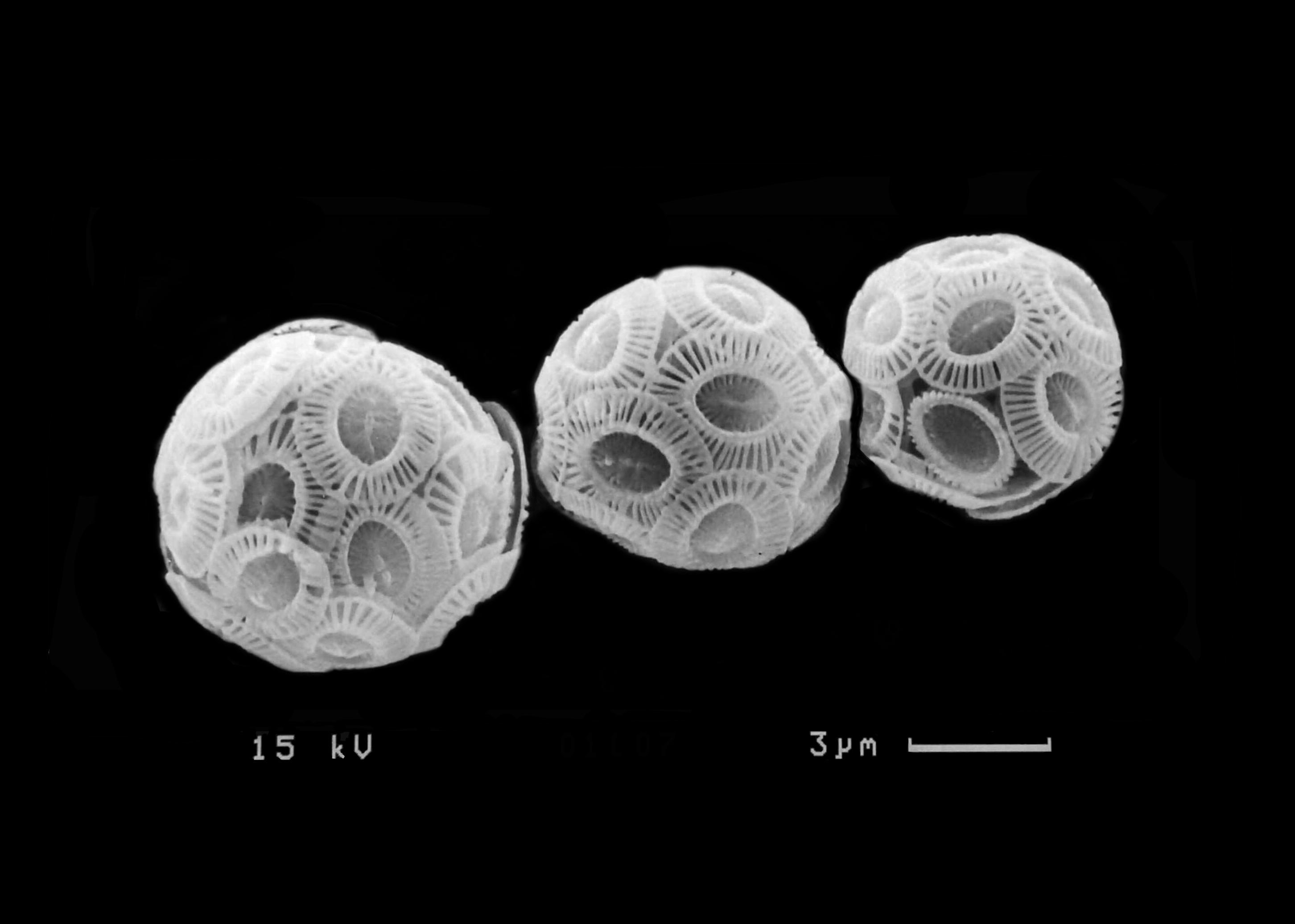Though They Be Tiny, These Algae Be Hardy
This hard-scaled algae adapted to increased temperatures and acidification of the water—and continued absorbing CO2.

A scanning electron micrograph of three Emiliania huxleyi cells. The hard-shelled algae is a globally important species of phytoplankton. Image by Kai T. Lohbeck
These single-celled algae with hard, calcified scales form large blooms in oceans around the world—and they just might have what it takes to withstand some of climate change’s impacts, according to a study that recently appeared in Nature Climate Change.
Researchers from GEOMAR Helmholtz Centre for Ocean Research in Kiel, Germany, wanted to test how well algae might survive in ocean conditions similar to those associated with climate change—specifically, increased temperatures and acidification resulting from rising levels of carbon dioxide.
They chose a common, rapidly reproducing species called Emiliania huxleyi—it can produce about 500 generations per year—that had already been conditioned to survive high acidity levels. Then for a year they subjected it to water temperatures ranging from 59 degrees Fahrenheit (a bit below the ocean’s average temperature) to a warm 79.3 degrees Fahrenheit (the hottest at which it can reproduce normally).
The researchers found that specimens reproducing at higher temperatures tended to be smaller—but they also increased their growth rate by 16 percent. What’s more, the algae absorbed just as much carbon into their outer scales as specimens under normal temperature conditions, despite their smaller size.
The scientists also tried a “worst-case scenario” experiment: exposing algae that had not been previously conditioned to acidic water to both high temperatures and high acidity levels for a year.
“We wanted to give nature a really tough job,” says Thorsten Reusch, a marine ecologist at GEOMAR who oversaw the study. His team found that the algae adapted about as well as the specimens that had been exposed to one condition at a time (they absorbed slightly less carbon into their scales).
Reusch’s team is now studying the genetic mutations that allowed these algae to adapt so well to their changing environment. They also plan to investigate how E. huxleyi and other algae species are able to survive under extreme conditions while also exposed to predators and competitors similar to those they’d encounter in the wild.
Still, the current research suggests that E. huxleyi and the hundreds of other rapidly reproducing phytoplankton species might be able to adapt quickly enough to survive, and even thrive, in extreme ocean conditions precipitated by climate change. That’s good news for earth’s other inhabitants.
“[Phytoplankton] are very tiny organisms, but they have a tremendous importance that most people don’t know,” says Reusch. Indeed, species like E. huxleyi help pull carbon out of the atmosphere and down into the ocean by fixing it in their hard scales. “One can show that about 25 percent of manmade carbon, as a service to humankind, is transported via this [algae] pump to the deep oceans,” he says.